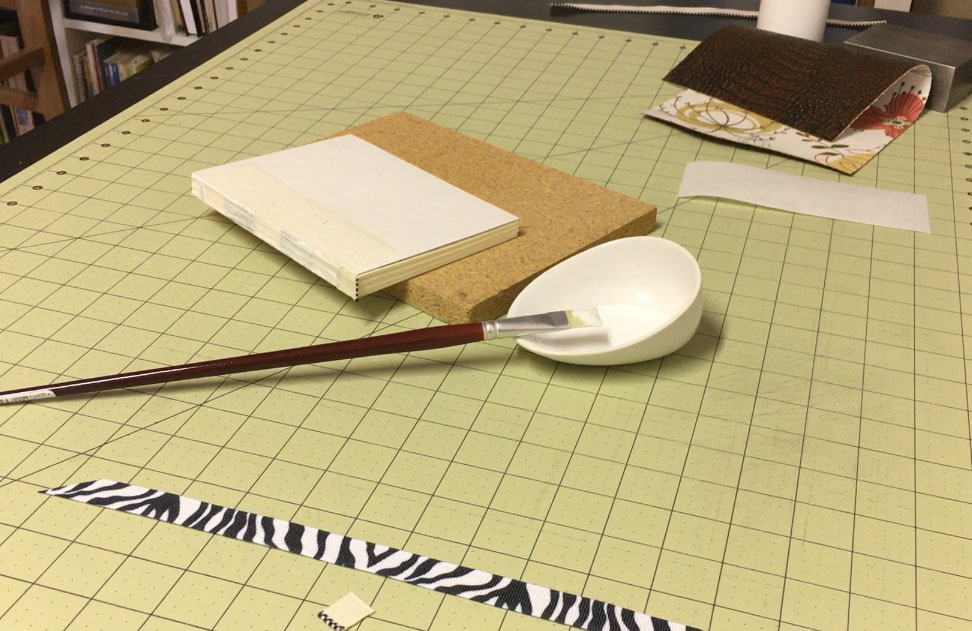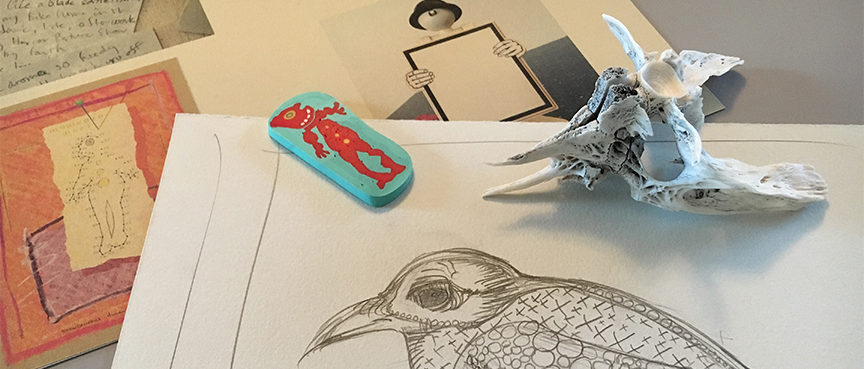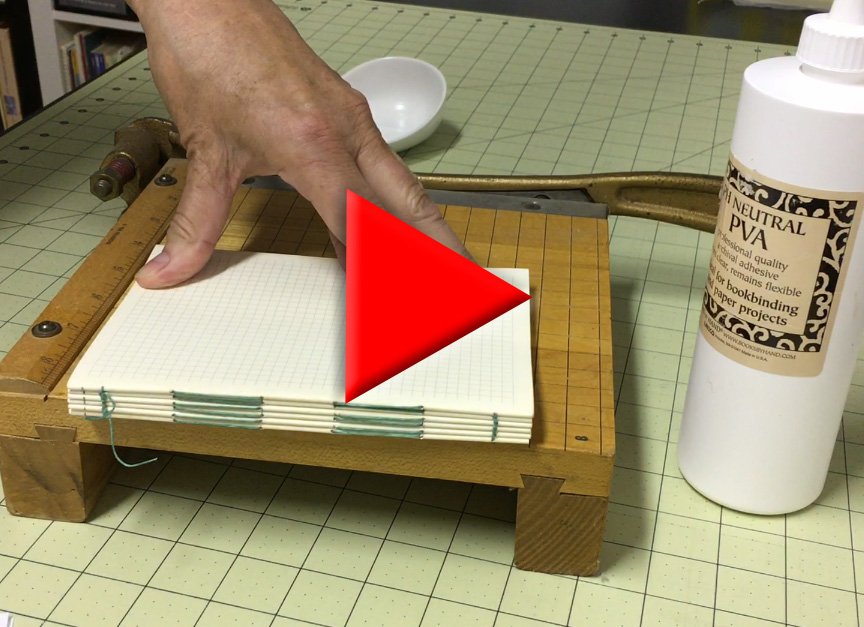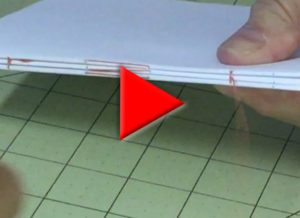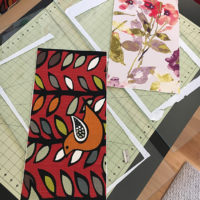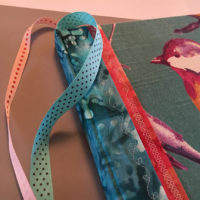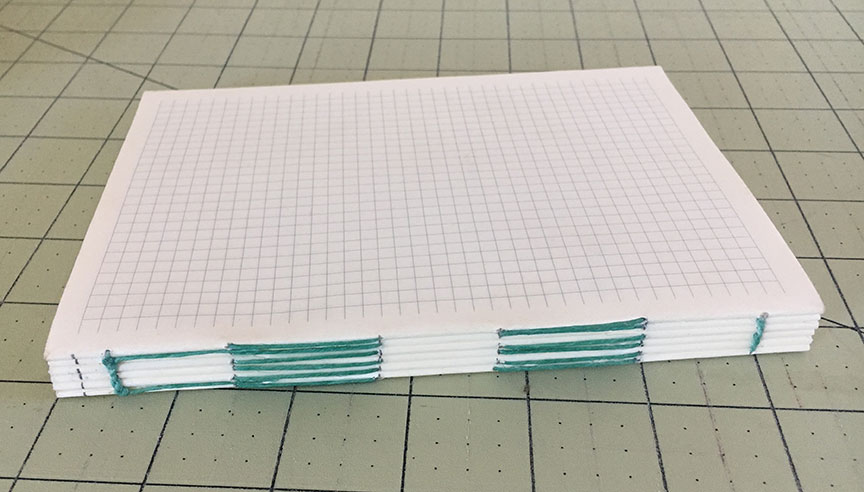
The first step in creating your textblock is choosing and preparing the paper.
If you are making a textblock with lots of pages you’ll want a lighter, text weight paper. One perfect paper for this is Rives lightweight (115 gm). It comes in White, which is actually cream in color, and in Cream, which is even creamier in color. 🙂 The other colors that you see in this image (Buff, Grey, actual White) are of the heavyweight (250 gm) printmaking paper. You’ll find great prices on this beautiful paper here:
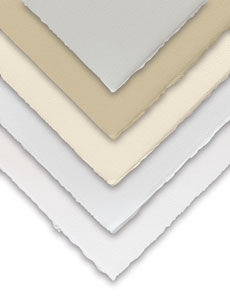
Make sure you are buying the 115 gm lightweight version of this beautifully made paper and not the heavier 280 gm printmaking version. Unless, of course, you are making a book that is appropriate for the heavier paper, like this example of Coptic Binding.
Once you have all of the sheets cut to the correct size you’ll want to fold them in half. A bone folder to burnish the folds is helpful at this step, but not required.
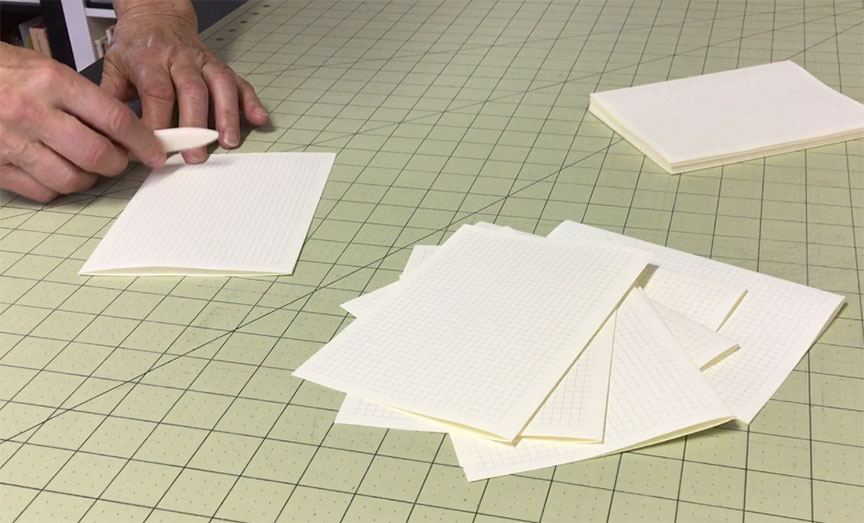
A single folded piece of paper is called a folio. You’ll want to gather several folios together to create a signature. How many folios you decide to put together will depend on several things – probably most importantly the weight of the paper. If you are using a heavy artist’s paper like Rives or Arches, you will probably want no more than four folios per signature. If you are using a light text weight paper then using eight folios would work fine.
It is these signatures that you will sew together to create the textblock.
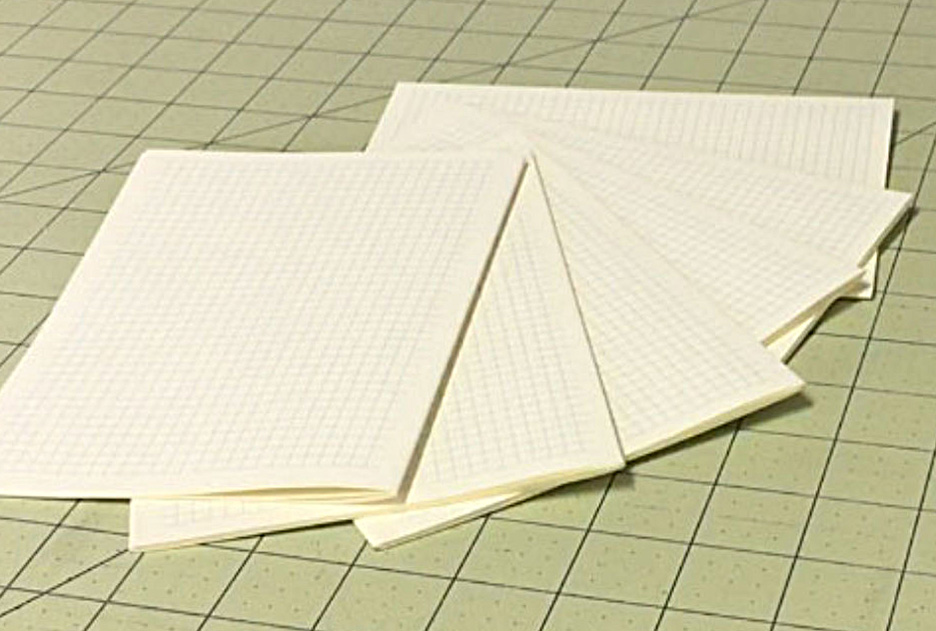
The first thing that you want to do, once you’ve gathered your signatures together, is to mark and pre-punch the holes. Pre-punching the holes will make your life much easier as you are sewing.
Jog all of the signatures together so they all line up and place a weight of some kind on top of the stack so they don’t move as you are marking them. This could be a couple of heavy books, a cloth-wrapped brick or you could even use clothespins or clamps to keep them together for this step.
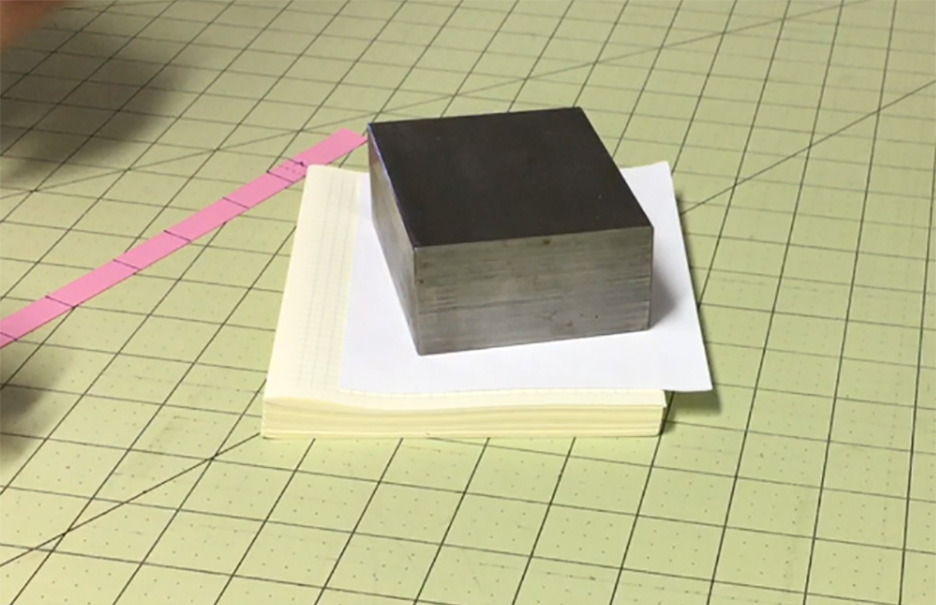
You’ll also want to consider preparing a marking template. This isn’t completely necessary – you could just use a ruler – but making this template in advance will insure that your measurements are correct and will just make the next step easier.
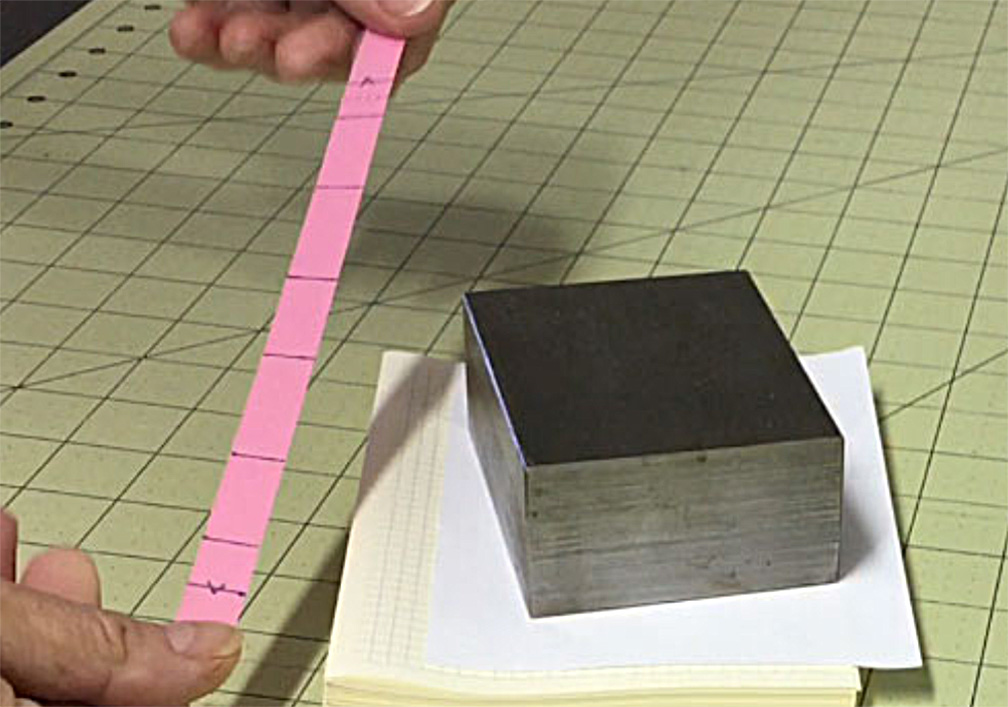
Lay your template, or ruler, on top of the stack of signatures and use something stiff, like a piece of bookboard, to mark against. Drag your pencil up along the bookboard, making sure that each signature gets a tick mark at each point on your template. Continue along in this fashion for each mark where you will make a hole to sew through.
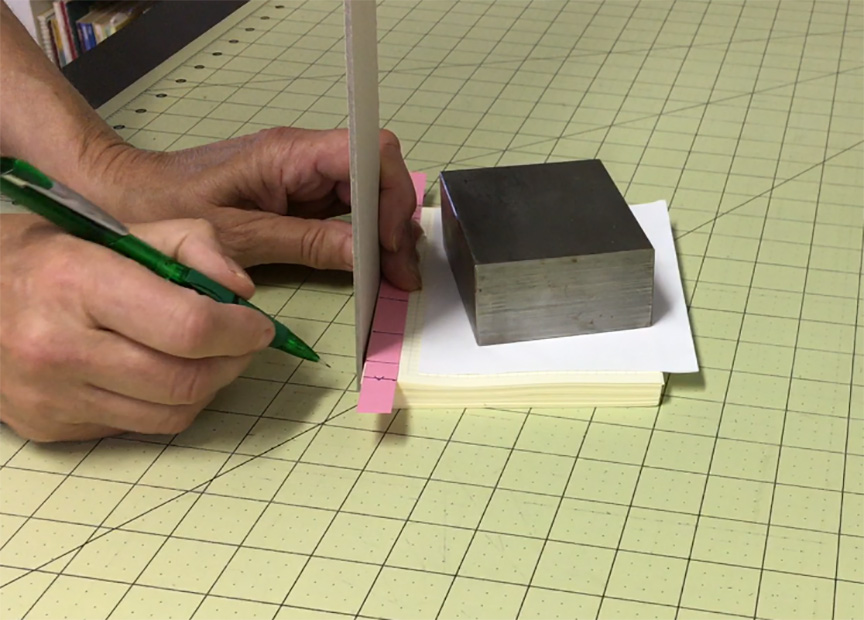
You’ll want to make one extra mark on just one side of the signatures. This will only be used as a reference mark and you won’t be punching holes through these marks on each signature.
The purpose of this mark is to keep your signatures correctly aligned. It is very easy to get turned around as you are sewing because you will be moving the textblock around, but you want to keep each signature correctly aligned with the others and this reference mark will help you do that.
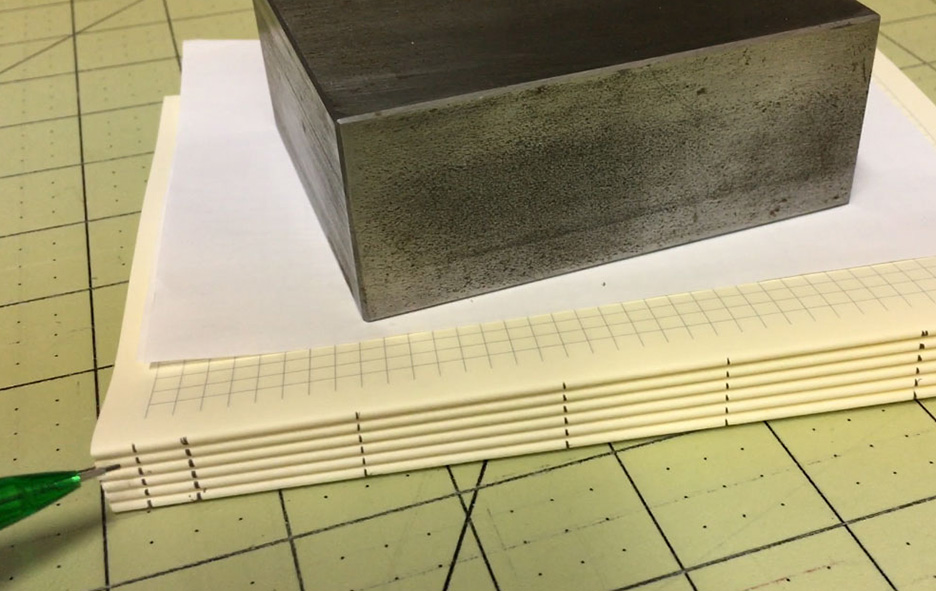
In the next step you will pre-punch the holes using a sewing needle. To make the needle easier to use as a hole punch you can give it a temporary handle by shoving the eye of the needle into a cork. This gives you something to hang on to.
Jog all of the pages in the signature together and hold them tightly as you poke a hole through each of the marks you’ve made.
Keep your needle as perpendicular to the pages as possible. You want the hole to be in the same position in each piece of paper in the signature so that they aren’t skewed once you start sewing them together. Do this to all of the signatures.
Remember that you don’t want to put a hole in the reference mark.
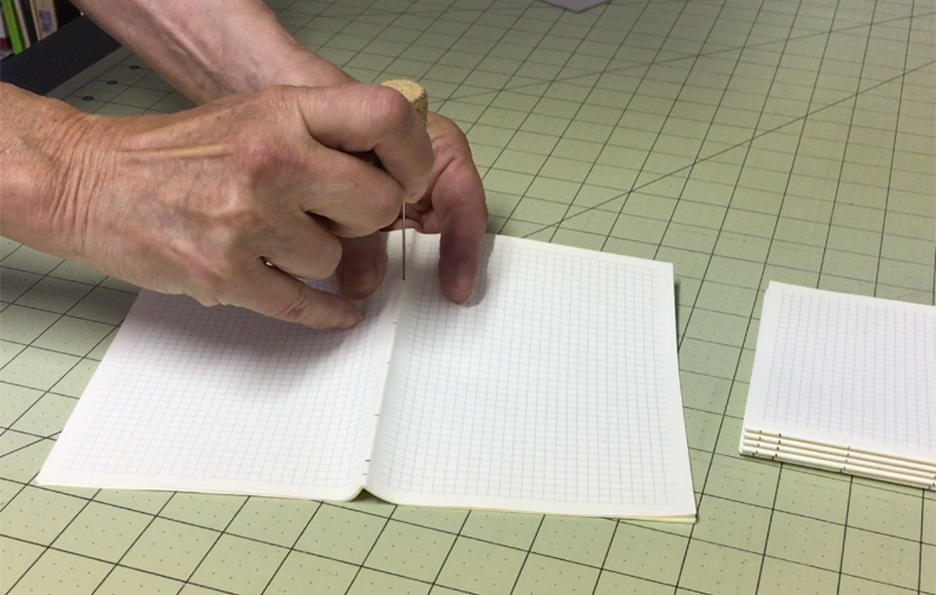
Next you want to prepare the thread. The thread I am using in the video tutorial is heavier than I would normally use for paper of this weight but I wanted to make sure that it would show up in the video and in the still images.
It’s also been pre-waxed so I don’t really need to do anything but measure off the amount I want to use.
A good rule of thumb is to start with 5 or 6 times the length of the book. You can always add thread later if this isn’t enough (see the video for adding thread here), but this general measurement usually works. Using way too much thread just makes it difficult to sew.
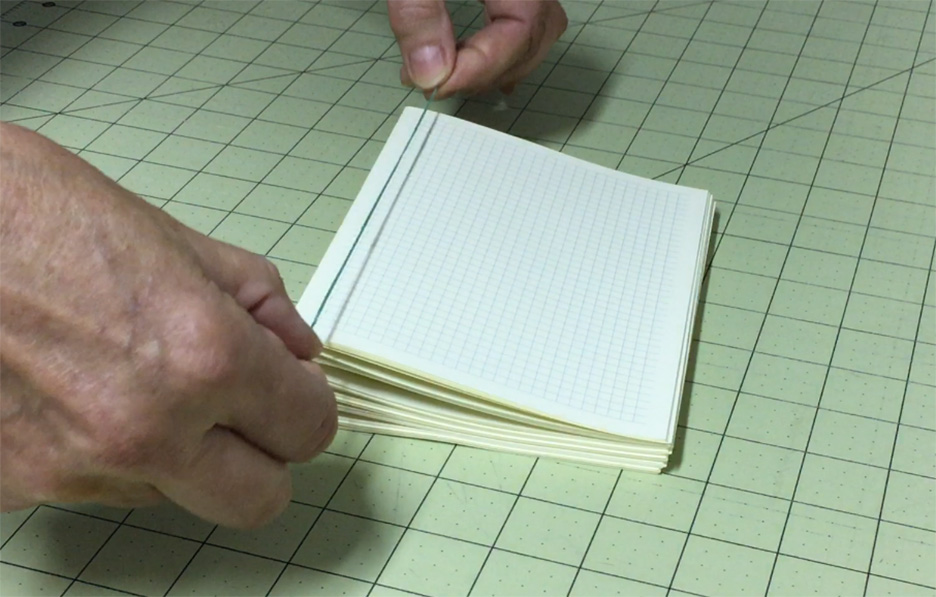
If you don’t have pre-waxed thread you’ll probably want to run the thread through your fingers a couple of times to relax the tension and then wax it yourself with beeswax. These steps help to keep the thread from tangling as you sew and also help to strengthen it.
Finally you can start sewing. Start from the outside of one signature and push the needle into the center of the signature. Pull the thread through leaving at least a three inch tail behind. Don’t knot this.
Sew out through the next hole. You don’t need to pull the thread tight yet, but pull some of the thread through. As you do this, always keep the thread parallel to the spine. If you pull perpendicular to the spine – out and away from the spine – you risk tearing the pages.
Back in through the next hole and out through the next. You can pull more of the thread through as you do this, but you don’t need to tighten any of it yet – you’re just giving yourself enough thread to sew this first signature.

Continue this process – in and out through the holes that you’ve marked and pre-punched. When you get to the last hole you should be on the outside of the signature. At this point you will want to tighten the stitches. Make sure you have left a reasonable tail behind – at least two to three inches.
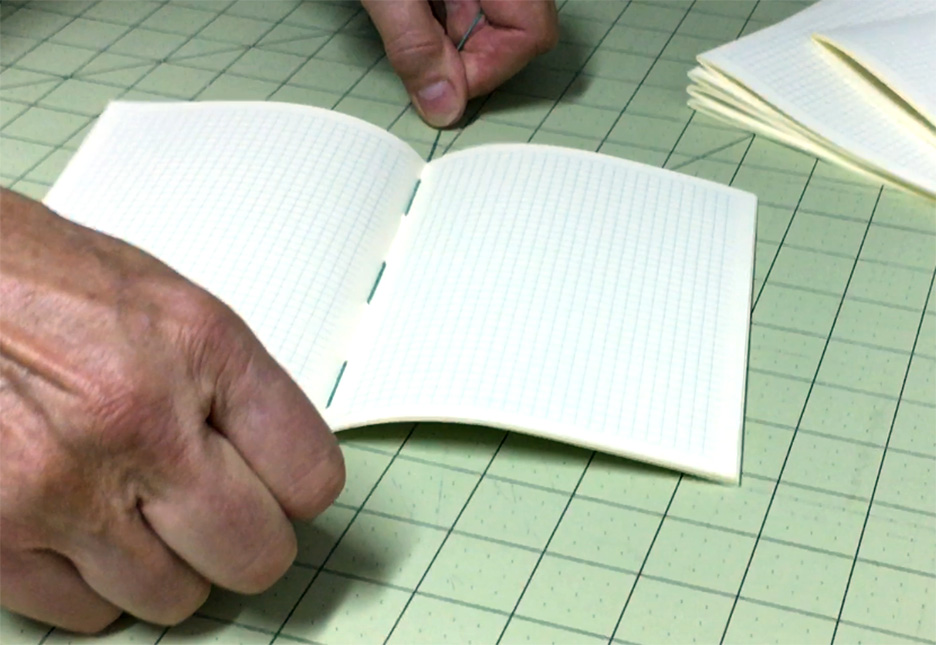
Throughout this whole process as you sew each signature you always want your stitches to be taut, but not overly tight.
Grab the next signature and align the reference point with the first signature. Sew from the outside into the center folds of the second signature, back out through the next hole, back in, back out, until you reach the end.
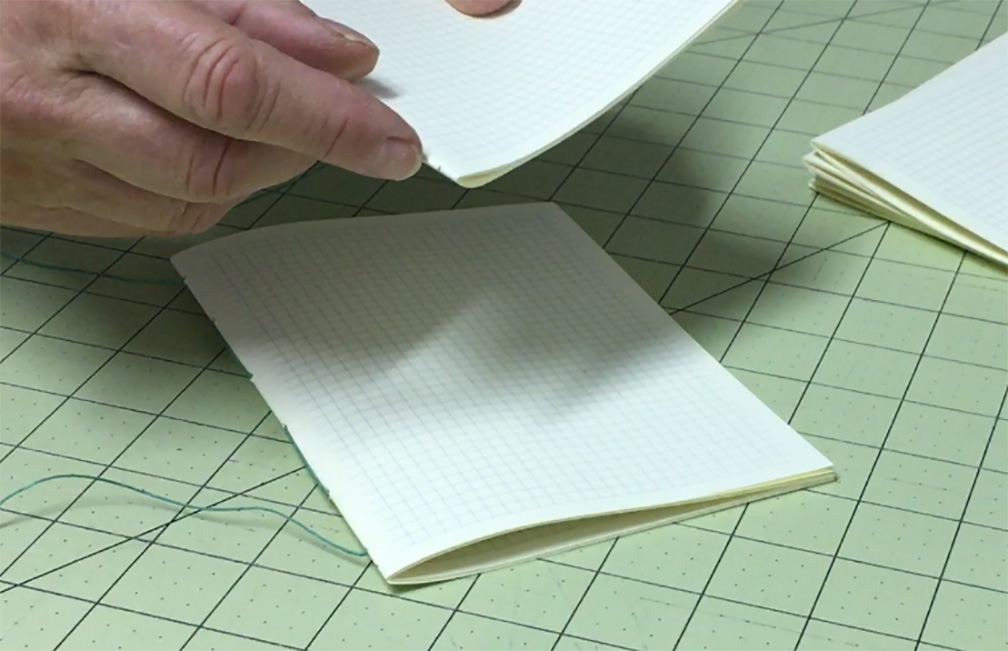
You should be back on the outside of the signatures at this point, on the same end of the spine where you first started. Make sure that all of the stitches are taut and remember to pull your thread parallel to the spine to keep from ripping the paper. Now tie the thread and the loose tail together into a simple square knot. Make this knot tight but not overly so.
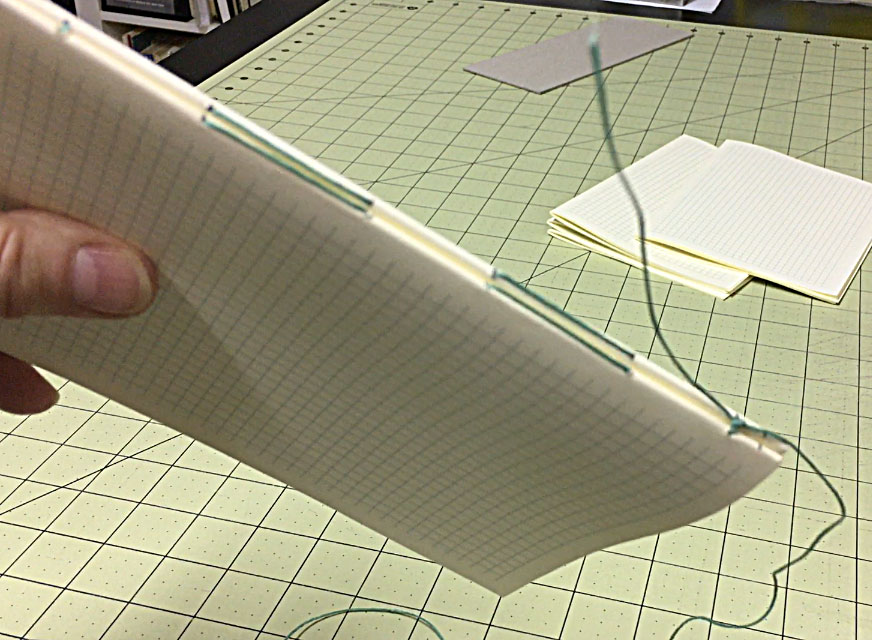
You can trim the tail now. This will later be glued to the spine. Align the next signature and begin this process again, sewing in and out of the holes that you’ve pre-punched. Once you reach the end of the third signature, with the thread on the outside of the spine, you will make a new stitch called a kettle stitch to join this signature to the rest of the signatures. (See the kettle stitch video here.)
To create the kettle stitch, pass the needle under the stitch in the first two signatures bringing the needle between the two signatures from the inside of the signature to the outside. Then bring the needle back up through the loop that is created in the thread. Pull this taut, holding the signatures together tightly as you do this.
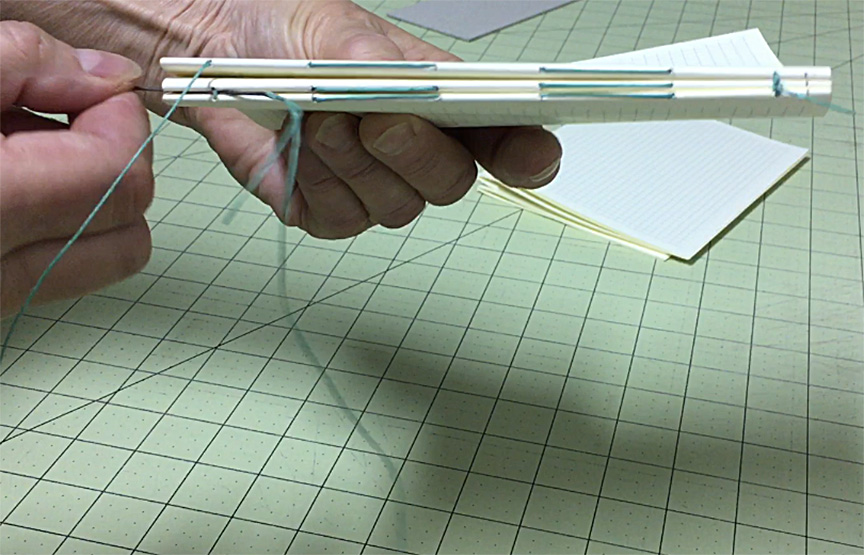
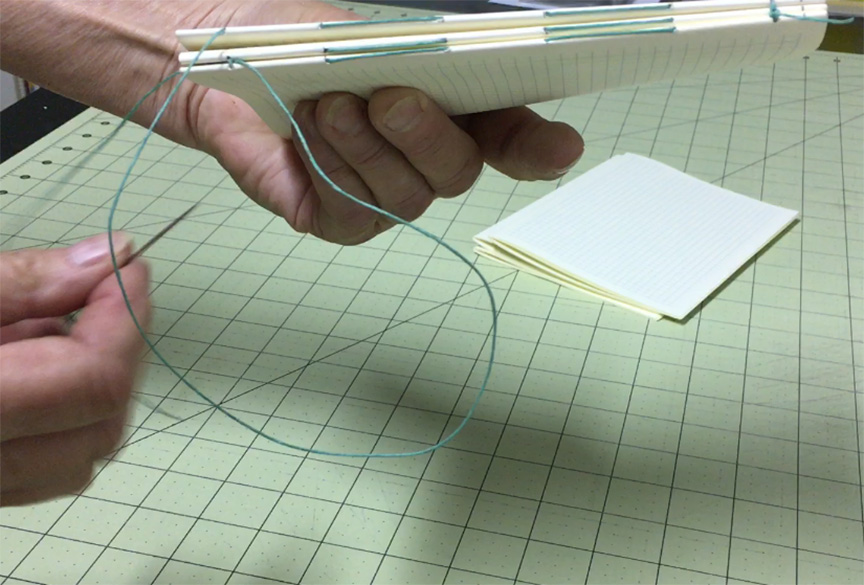
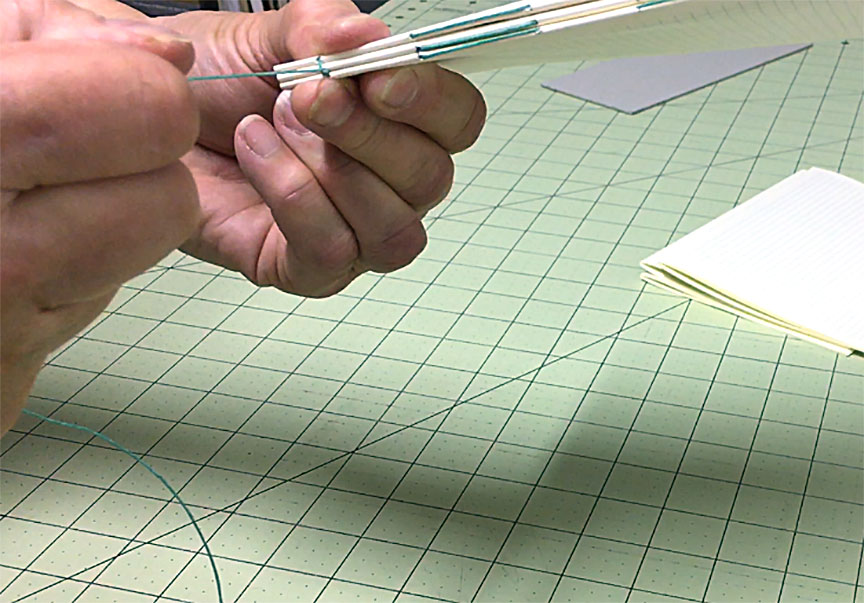
A close-up video look at the Kettle Stitch:
Continue this process with the rest of the signatures, linking each new one to the others by using the kettle stitch at the end of each one until you get to the last signature.
For the last signature create a normal kettle stitch between the previous two signatures then create a second kettle stitch between the last signature you just added and the previous one. This double kettle stitch will finish off the sewing and you can trim the thread.
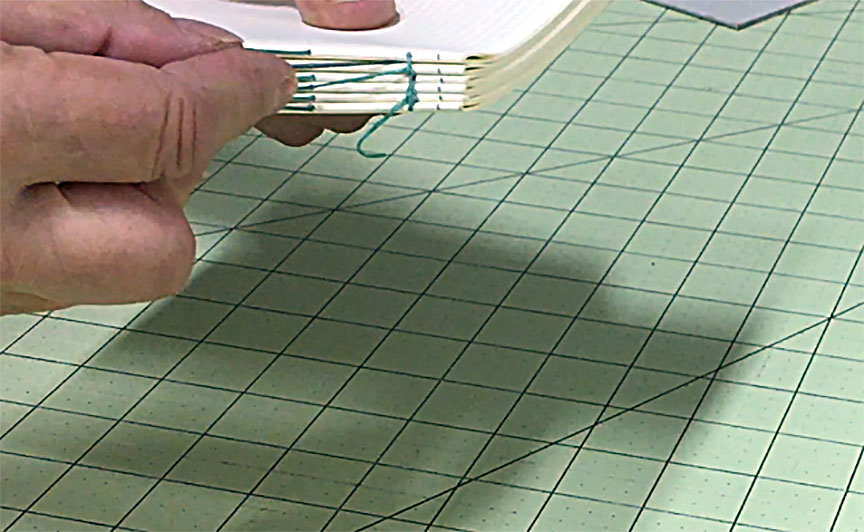
At this point you have finished sewing the signatures together. In the next step you’ll want to glue the spine. Square up the text block and weight it or clamp it so that the signatures can’t move around or shift. You can use a fabric covered brick or a heavy book as a weight, or use clothespins to clamp the textblock.
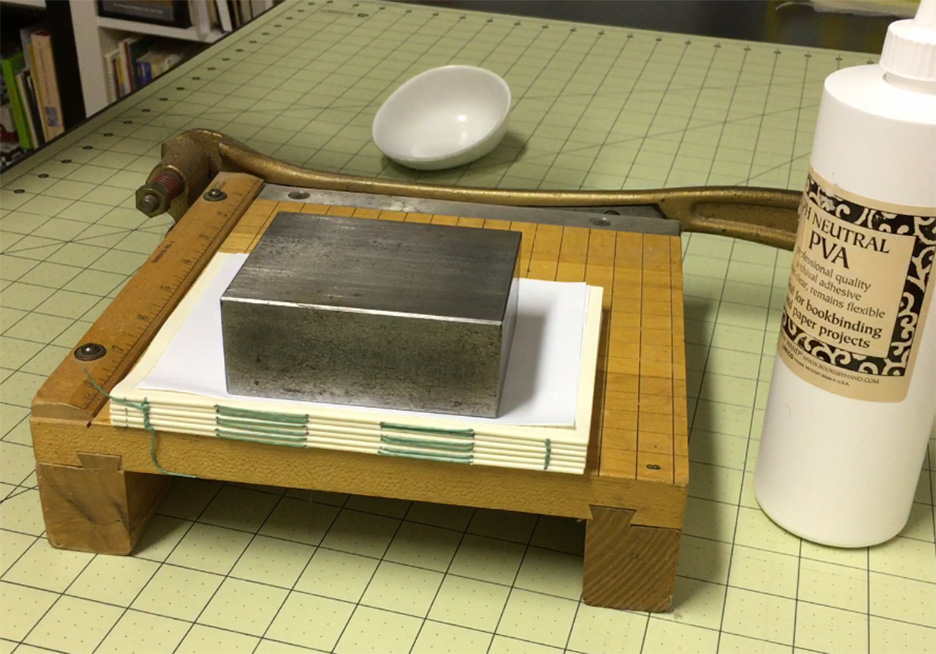
Using the tip of your finger apply a coat of PVA glue along the entire spine, covering the thread and making sure that the glue is filling in between the grooves of the signatures. Wipe off any excess that gets over the edges. At this point you can fold the thread ends into the grooves between the signatures and glue those in place as well.

Leave the book weighted or clamped until the glue is completely dry.
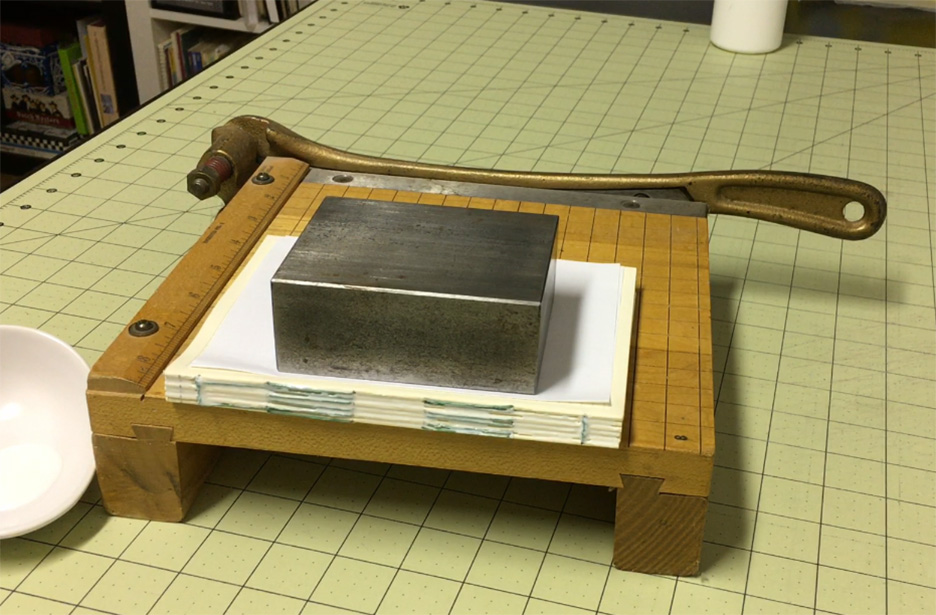
This link will show you how to finish off your textblock. You will see how to reinforce the spine, add a headband and tailband, add a bookmark if you want, and add a flyleaf to the front and back so you can attach the signature to your cover.
